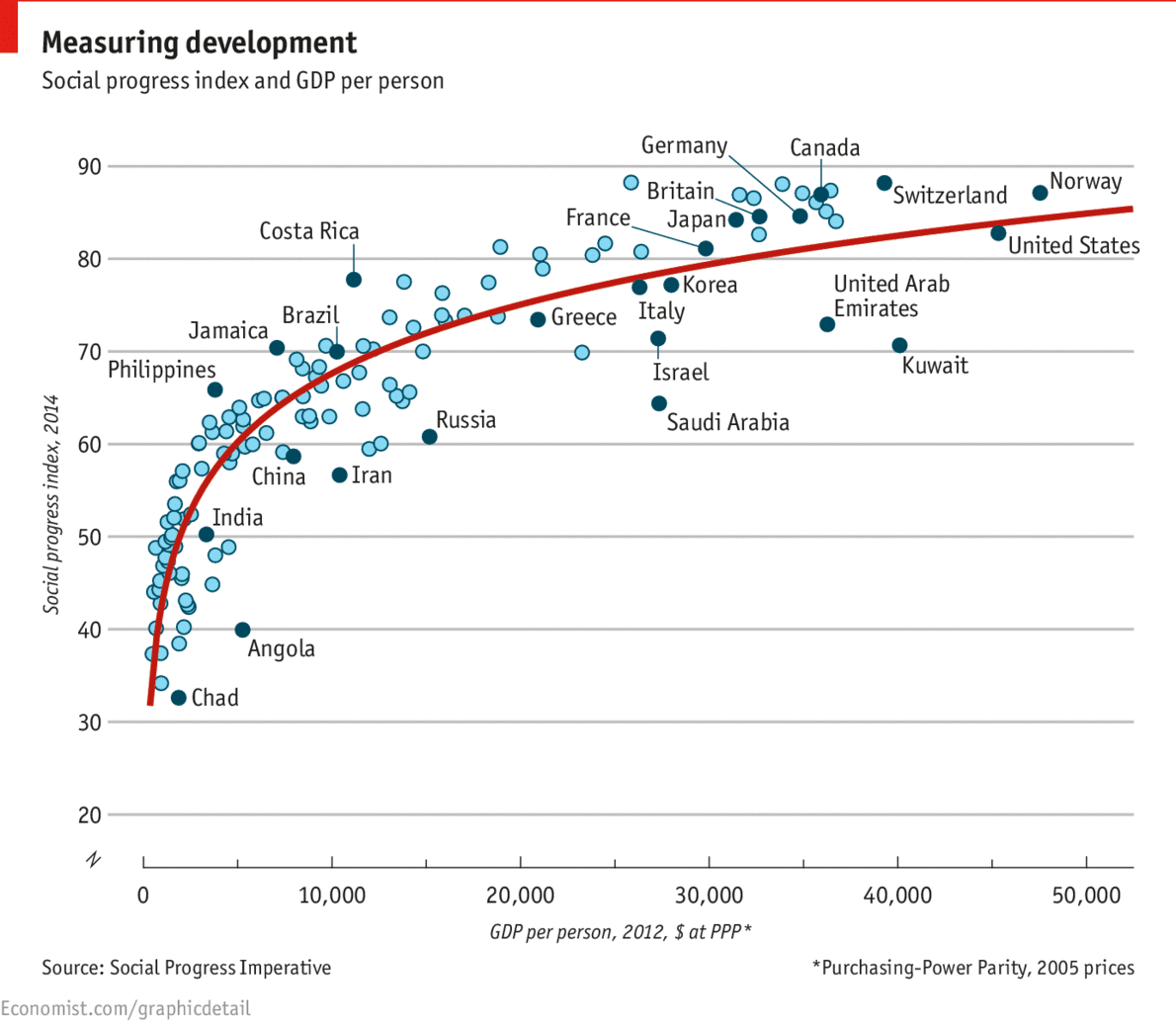I like this quite a lot. The Economist describes:
Importantly, the indicators do not look at inputs (like spending on education) but only outputs (like literacy). And they hew to social, health and environmental factors, not economic ones—making it unique compared with other indices measuring well-being from the OECD, UN Development Programme and others.This ins't entirely right. The SPI looks at plenty of inputs as well as outputs. The details of the Social Progress Index are here. For example, if the goal is education, the measure looks at literacy but also school enrollments - which is arguably an input. But it is still a nice, more comprehensive measure of social progress and makes the point that simply looking at GDP per capita misses the entire story (though I will say that the correlation is still quite high and thus GDP per capita is a useful starting point).
Yet when the SPI is compared with GDP per person, its usefulness shines. Countries situated above the curve do better in terms of social inclusiveness than their economic strength might dictate, while countries below the curve perform worse. "There is a view that economic development and social progress go hand in hand. That's true on average, but not in particular," says Michael Porter, a professor at Harvard Business School who worked on the study. (Matthew Bishop, The Economist's US Business Editor, also served on the advisory board.) Hence, Costa Rica and Iran have similar GDP per person, but exhibit massive social differences. Likewise, Brazil and Kuwait rank about the same in terms of social progress, even though the Gulf country has four times the GDP per person.
It also looks at 'opportunity' which is a bit of a development buzzword and is something that the UNDP has been pushing especially hard. Included in opportunity are things like 'tolerance and inclusion' which dings more socially conservative societies hard.
Anyway, here is a nice toy to play with:
Enjoy!


No comments:
Post a Comment